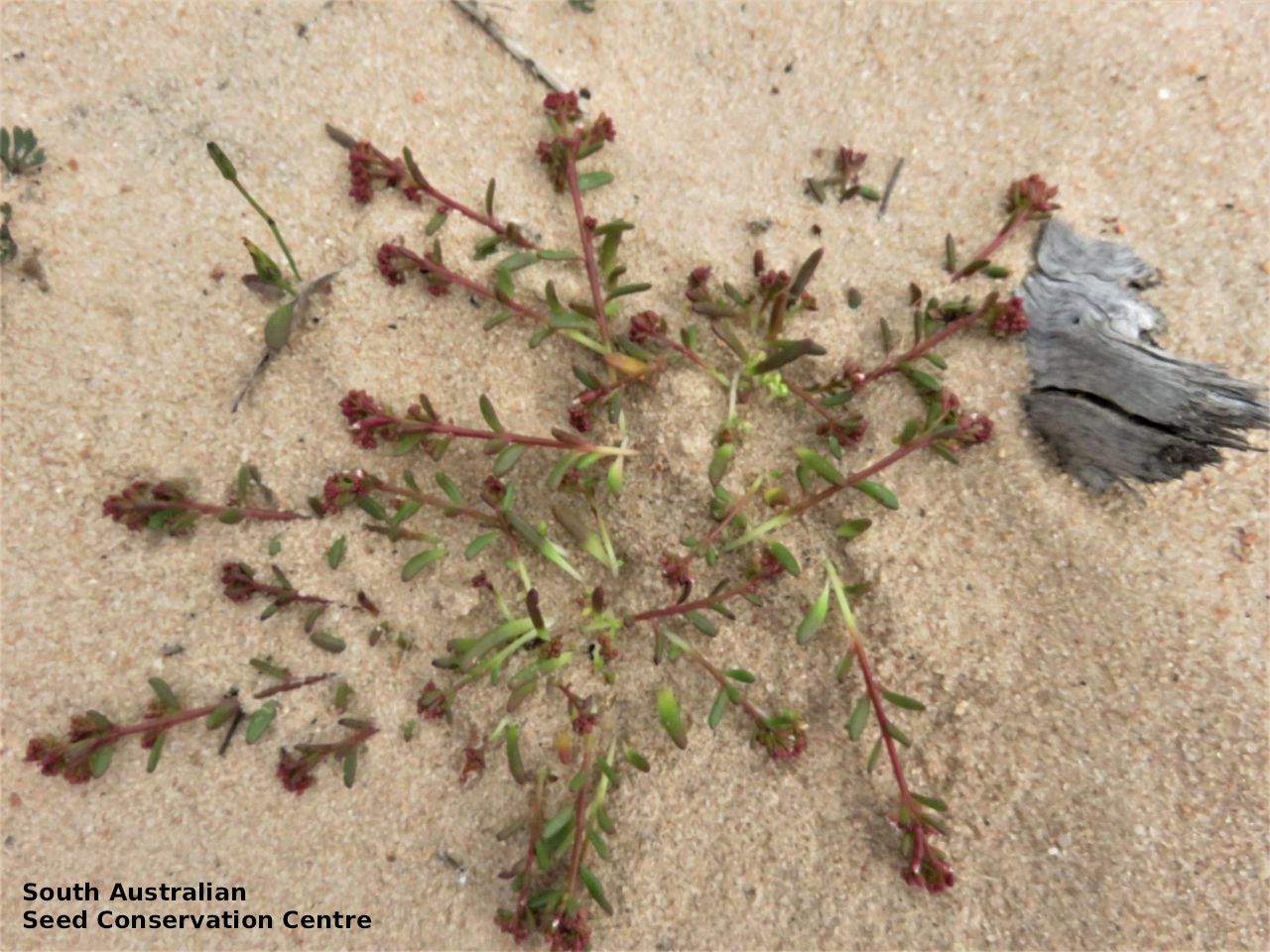
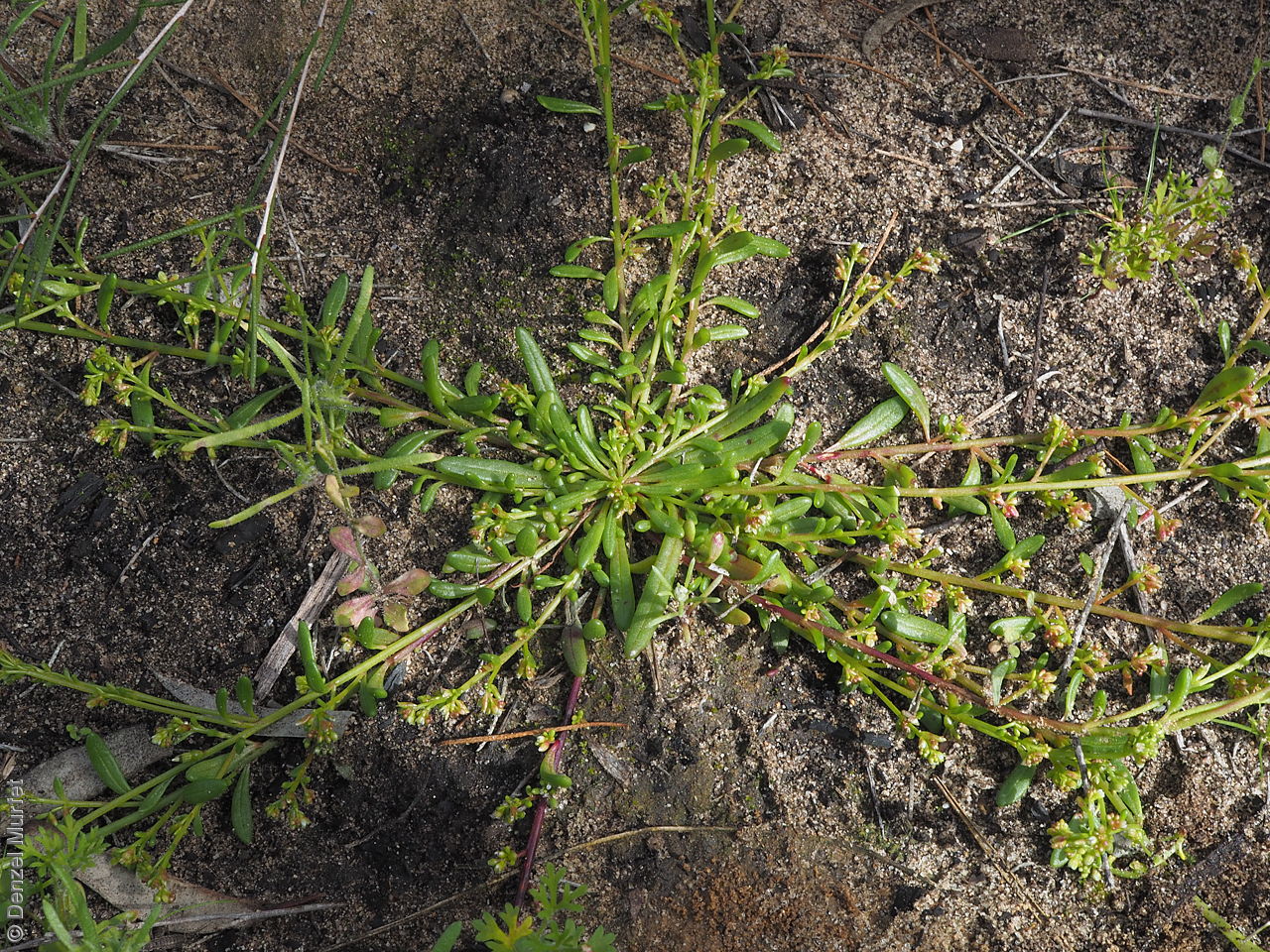
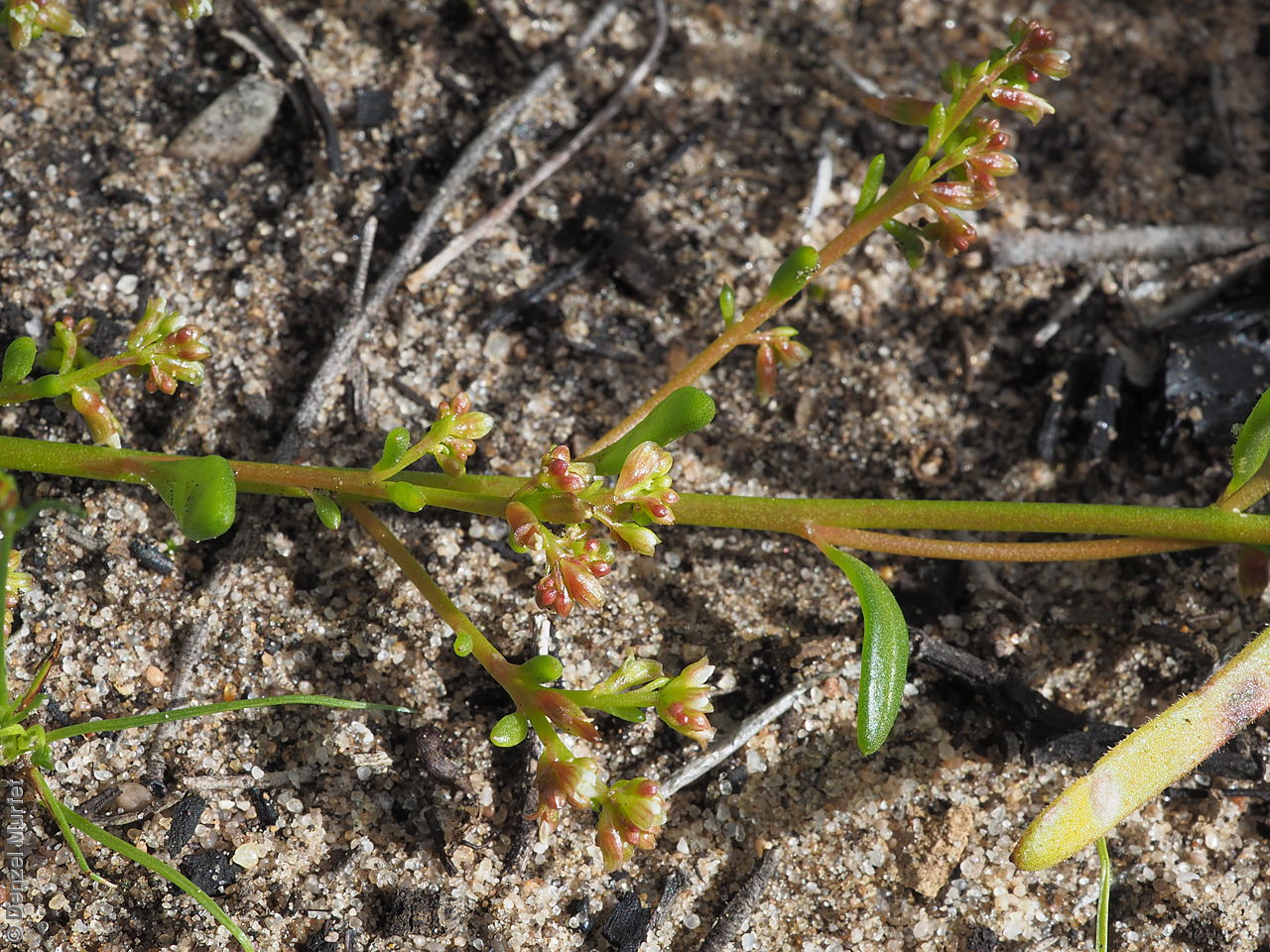
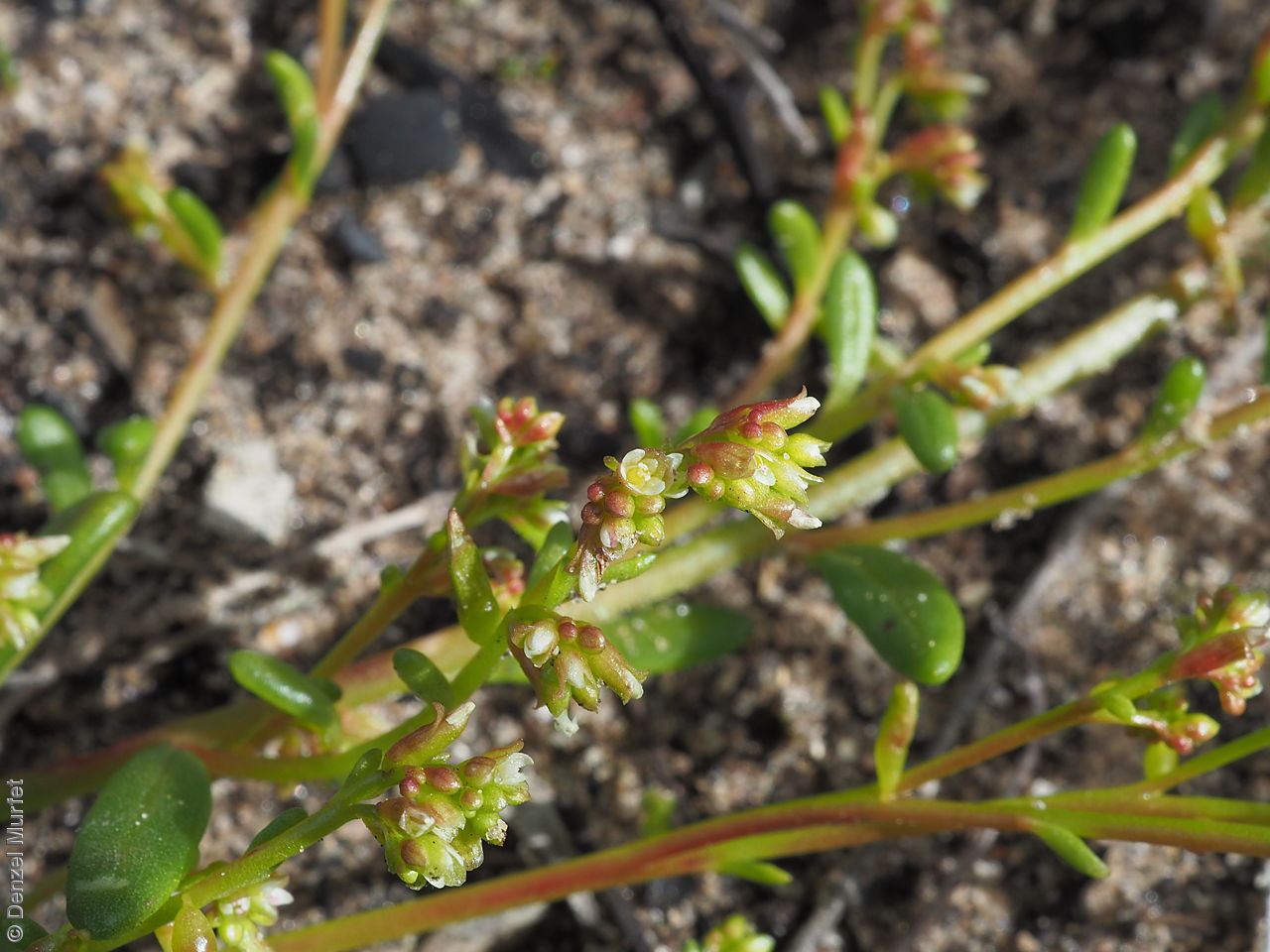
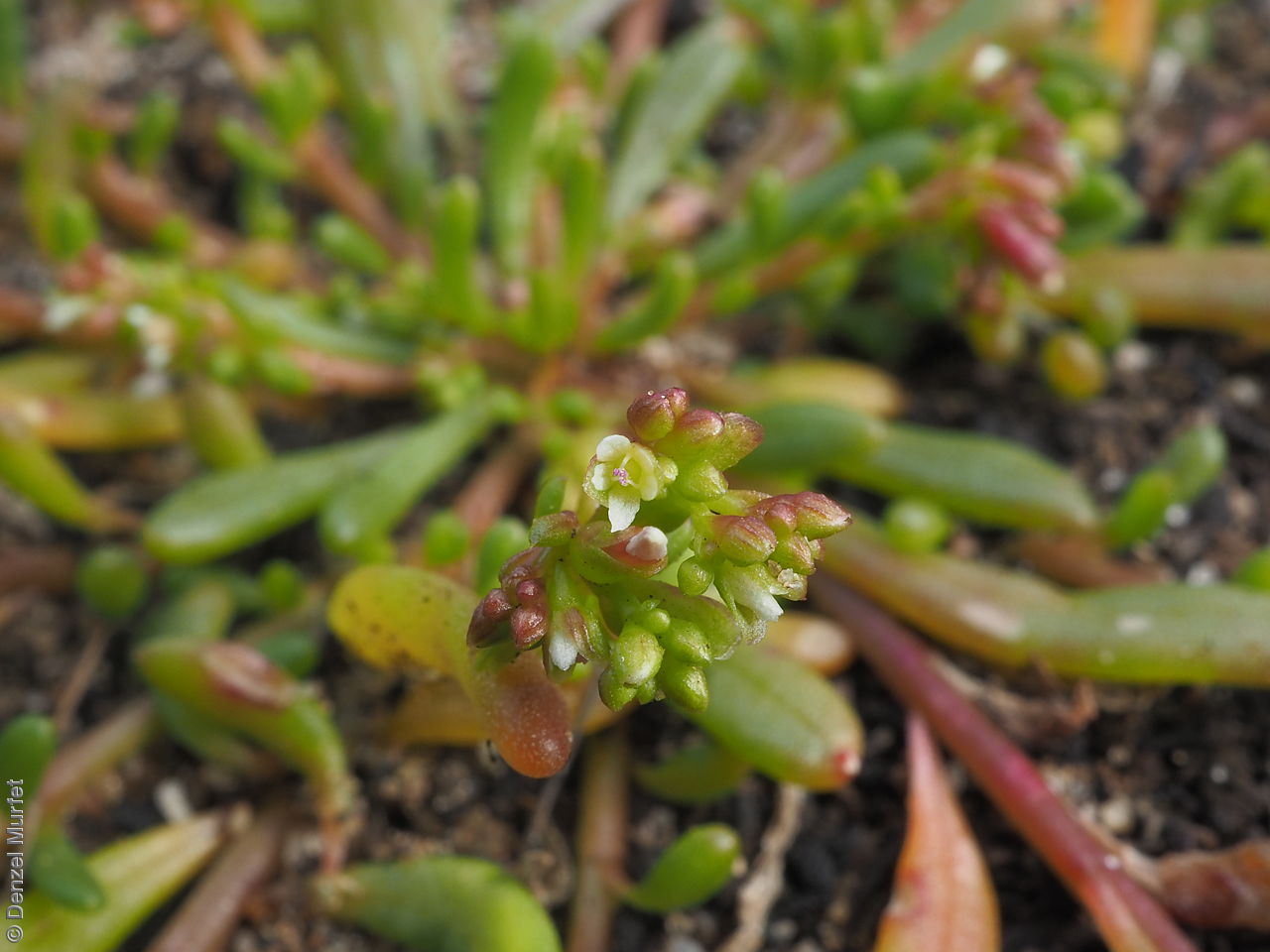

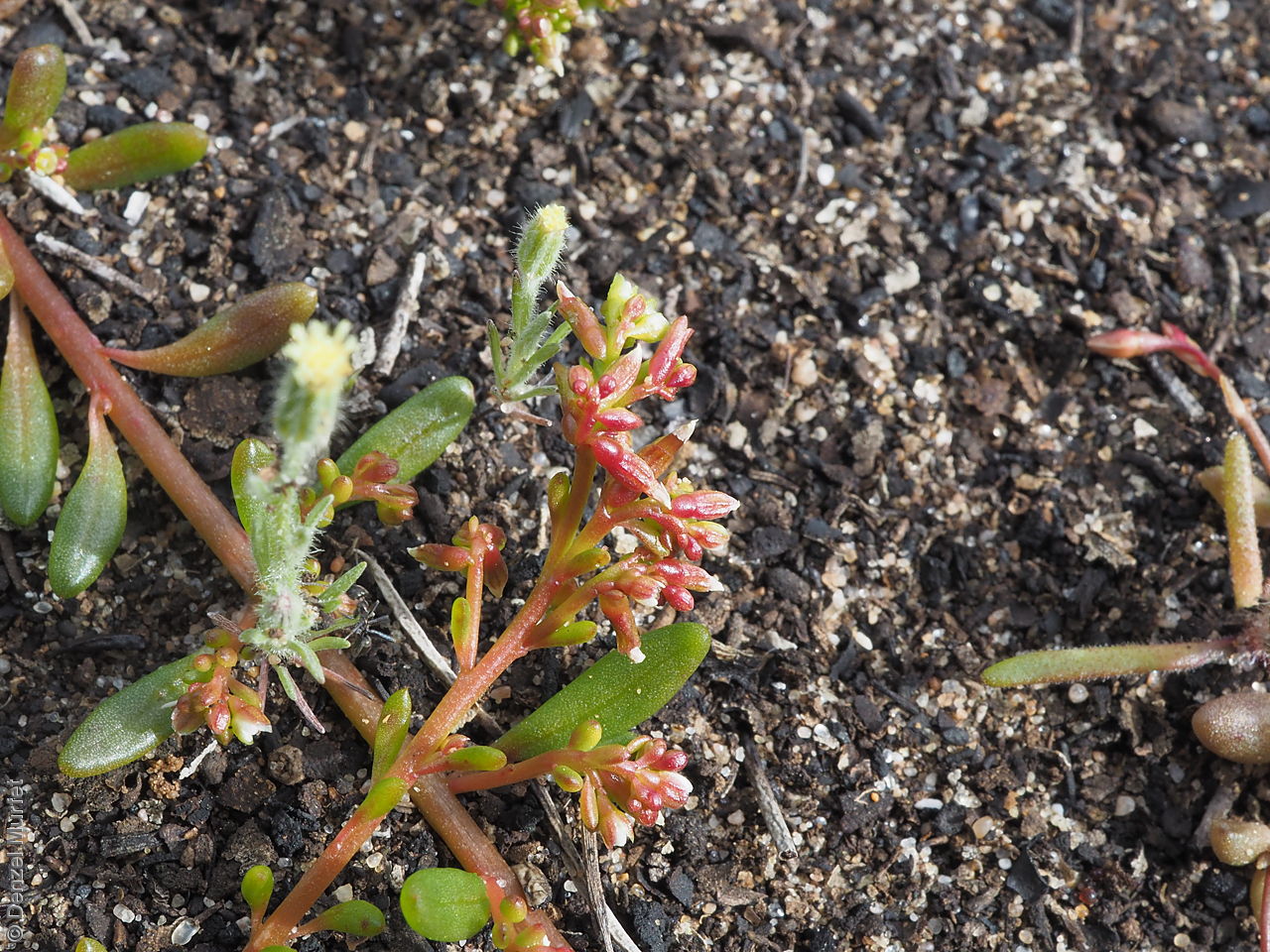
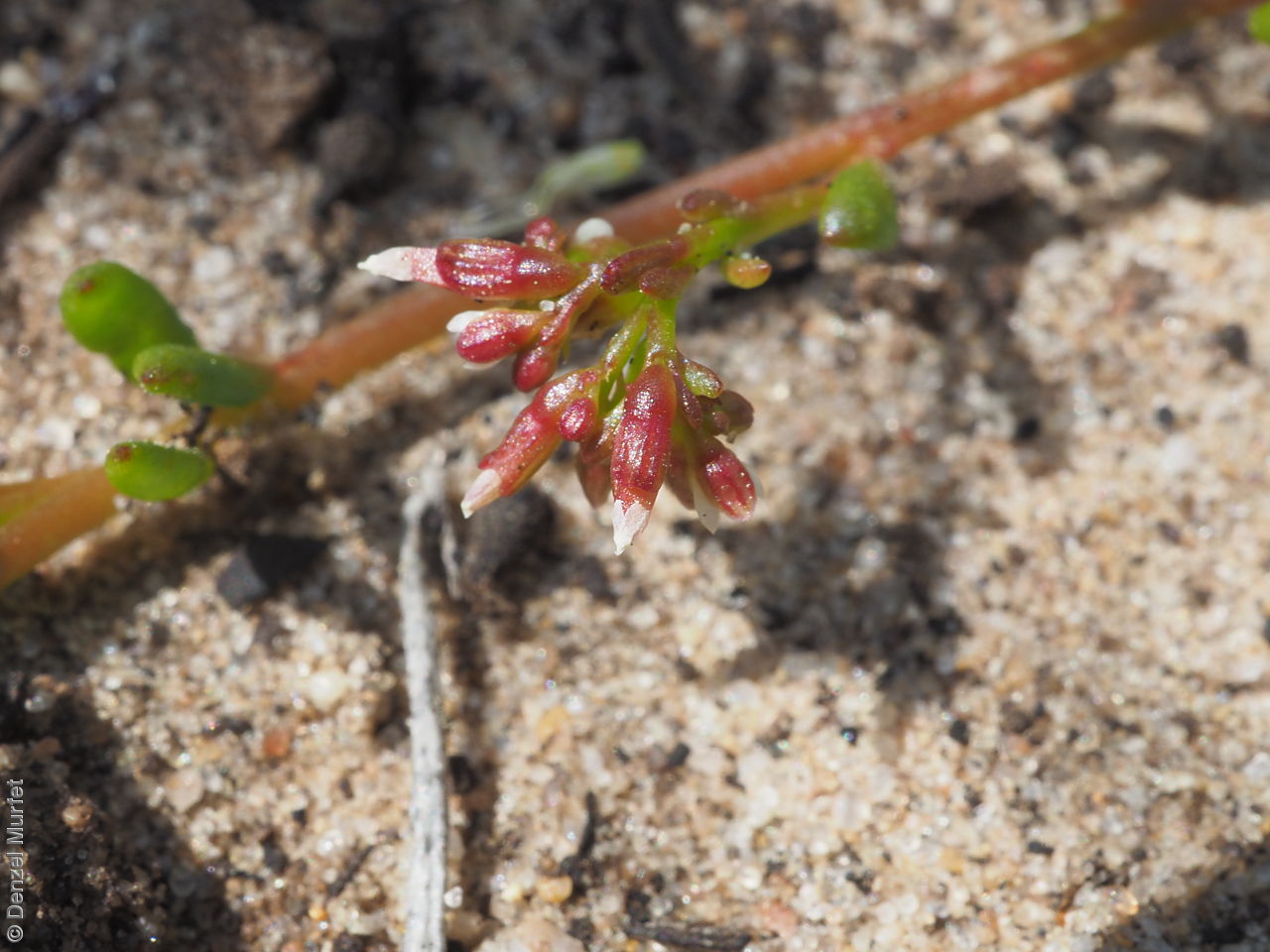
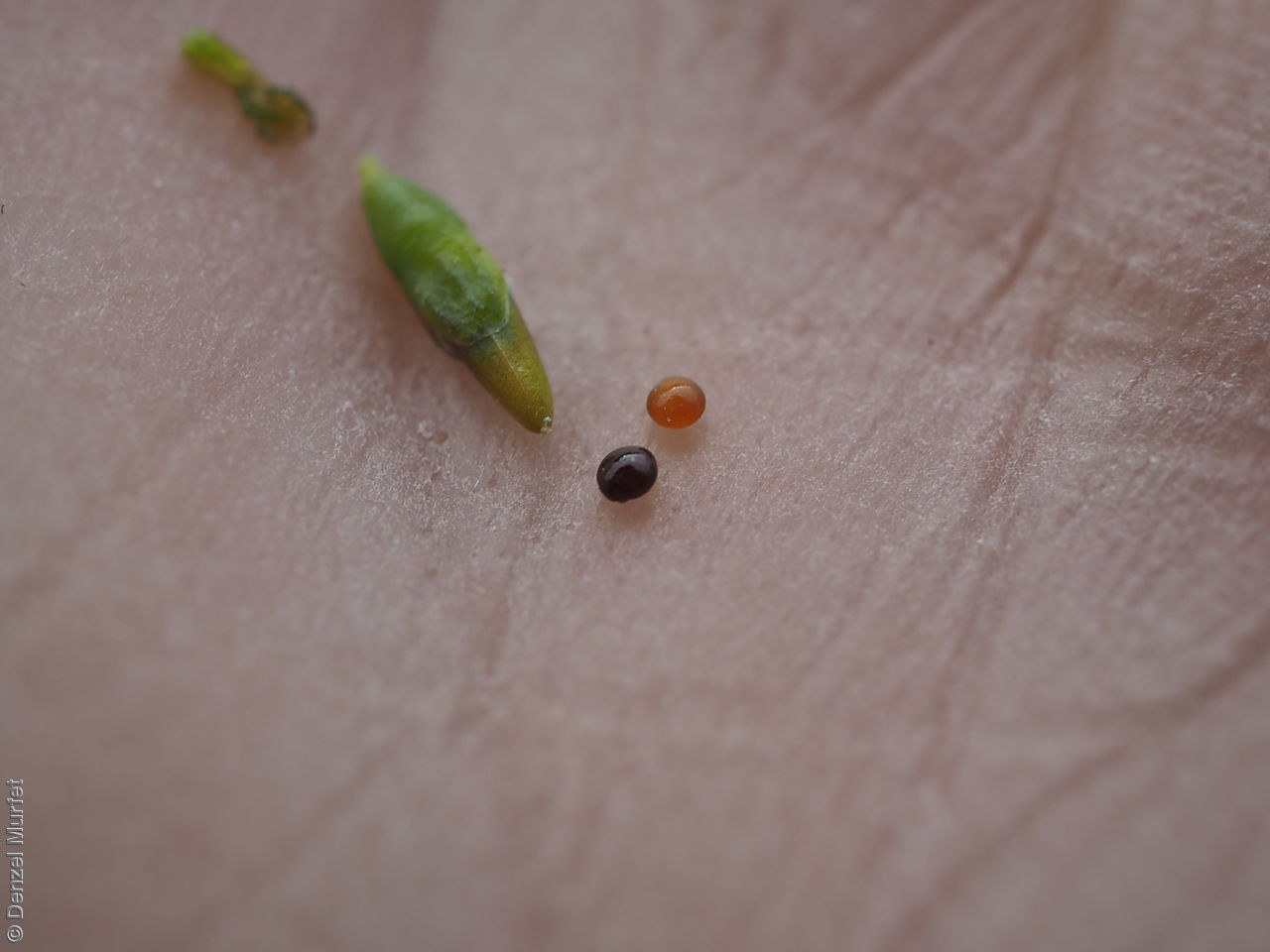
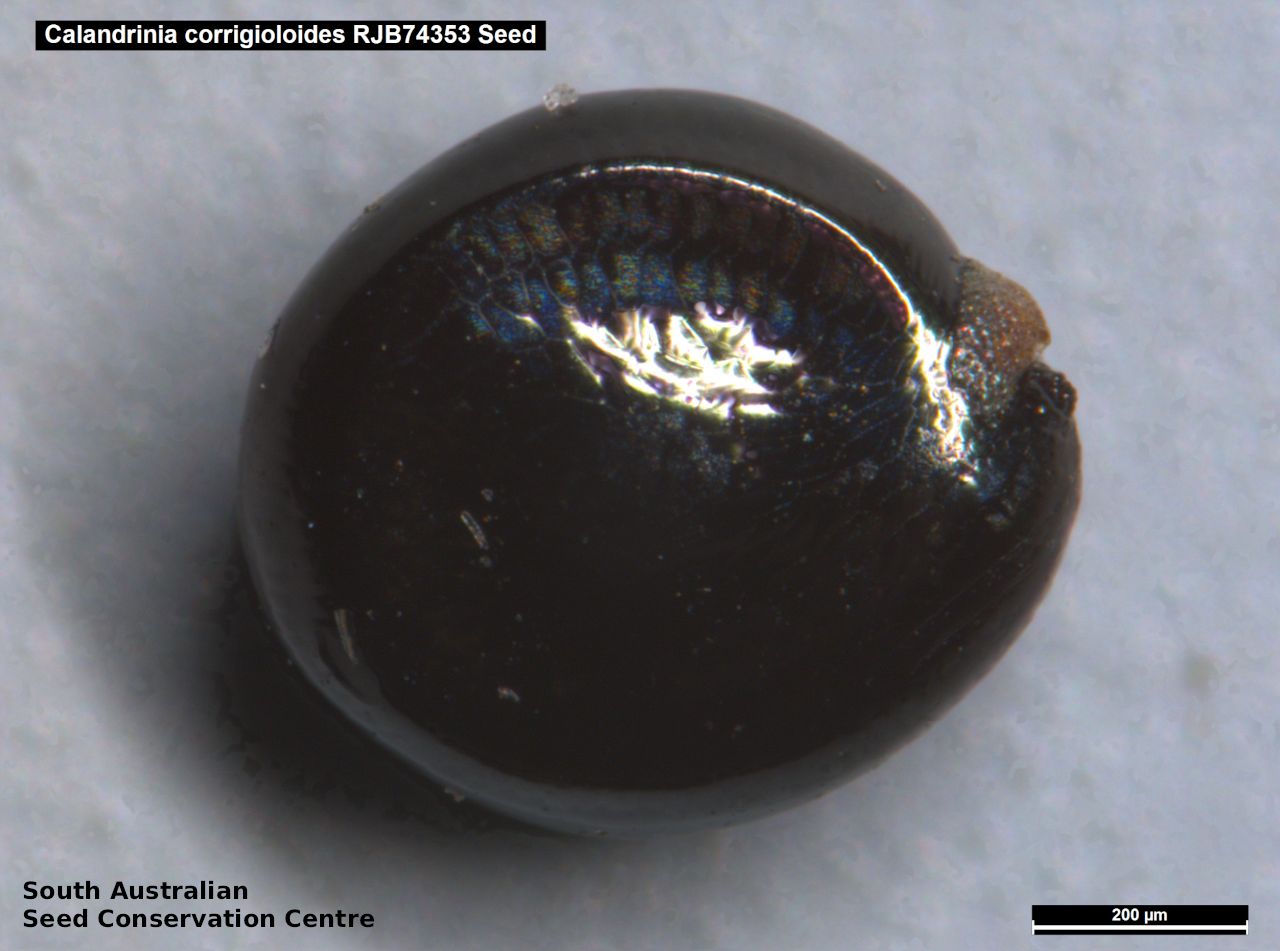
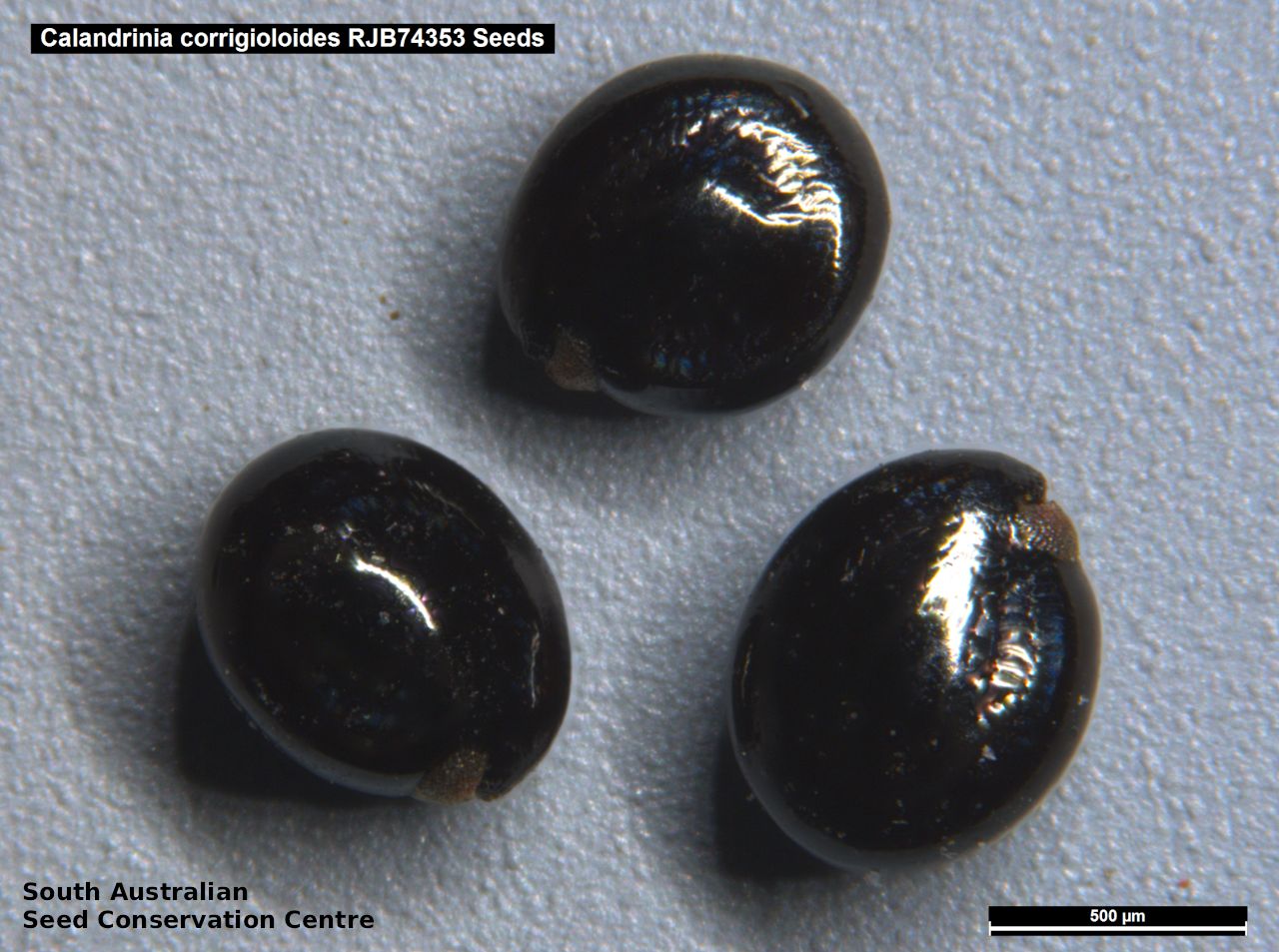
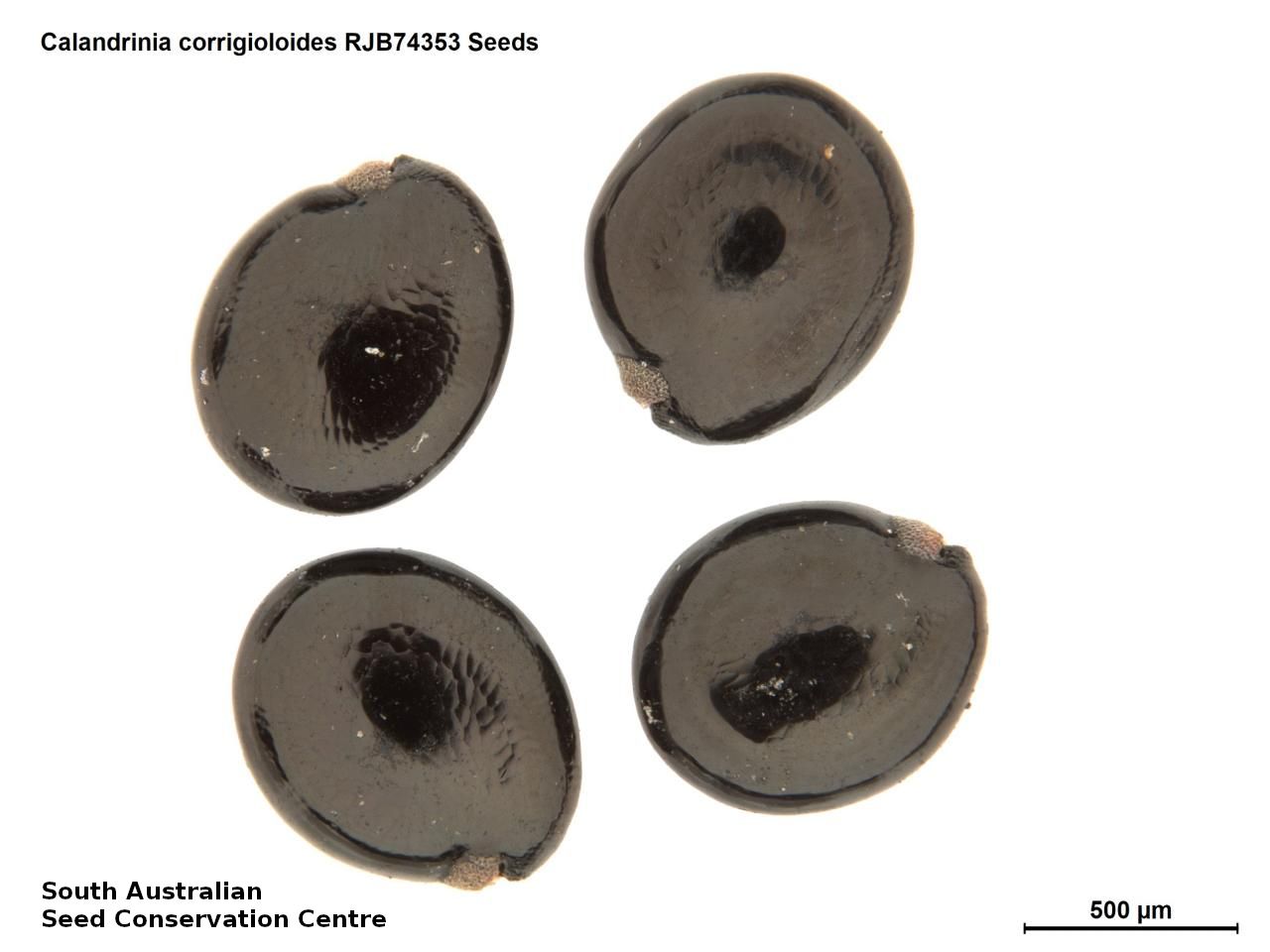

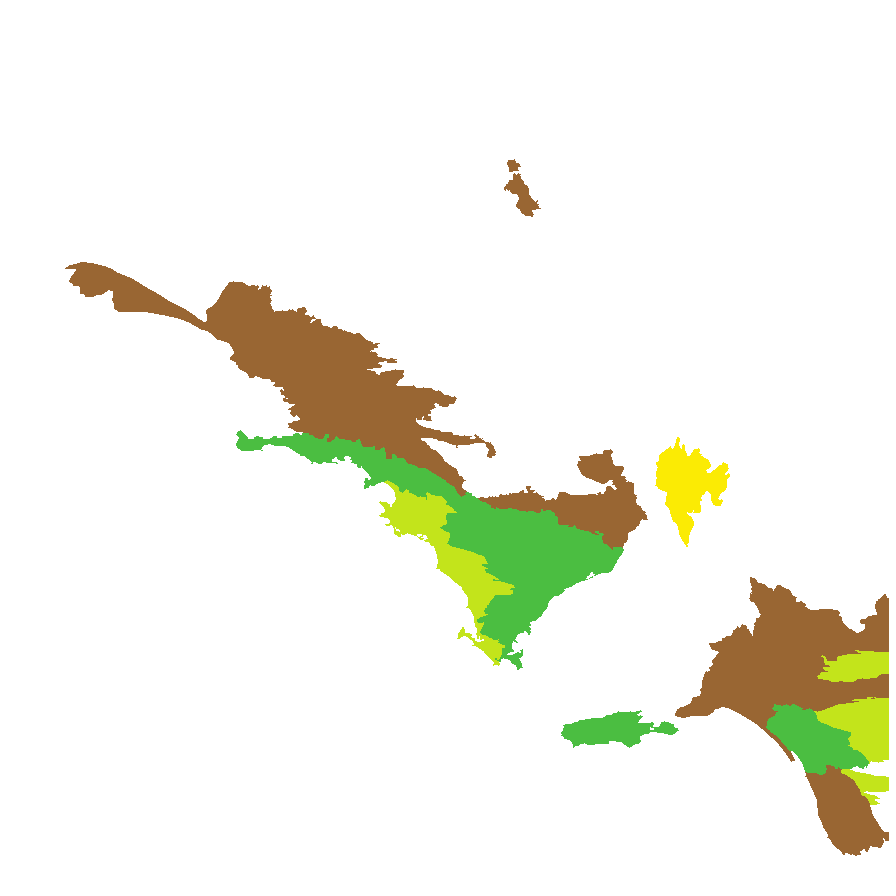
Botanical art
Prior names
Parakeelya corrigioloides
Claytonia corrigiolacea
Common names
Strap Purslane
Etymology
Calandrinia named after Jean-Louis Calandrini (1703-1758), a Swiss scientist, professor of mathematics and philosophy. Corrigioloides meaning resembling Corrigiola, a genus in the Family Molluginaceae.
Distribution and status
Found in the southern part of South Australia, on Eyre Peninsula, Kangaroo Island and the southern Mount Lofty Ranges, growing in sand. Also found in Western Australia and Victoria. Native. Common in South Australia. Uncommon in Victoria. Common in Western Australia.
Herbarium regions: North Western, Lake Eyre, Eyre Peninsula, Murray, Yorke Peninsula, Southern Lofty, Kangaroo Island, Green Adelaide
AVH map: SA distribution map (external link)
Plant description
Decumbent annual herb with stems to 40 cm long. Leaves basal and on flower stems, alternate, sessile or shortly petiolate, oblanceolate to narrow-oblong, basal leaves to 3 cm long and 0.4 cm wide. Flowers white to pale-pink, appearing between August and October. Fruits are red-brown narrow-ovoid to elongate-cylindrical capsule to 5 mm long with 3-valves. Seeds are shiny black reniform-ovoid seed to 1 mm long and 0.7 mm wide, with a smooth surface. Seed embryo type is peripheral.
Seed collection and propagation
Collect seeds between September and December. Collect mature capsules that are turning a red-brown colour and contain dark seeds. Place the capsules in a tray and leave to dry for one to two weeks. Then rub the capsules gently by hand to dislodge the seeds. Use a sieve to separate the unwanted material. Store the seeds with a desiccant such as dried silica beads or dry rice, in an air tight container in a cool and dry place. Seed viabilityis usually high.
| Location | No. of seeds (weight grams) | Number of plants | Date collected | Collection number Collection location | Date stored | % Viability | Storage temperature |
|---|---|---|---|---|---|---|---|
| BGA MSB | 14,000 (2.08 g) 14,000 (2.08 g) | 50 | 18-Sep-2007 | RJB74353 South Eastern | 19-Sep-2008 | 80% | -18°C |
Number of plants: This is the number of plants from which the seeds were collected.
Collection location: The Herbarium of South Australia's region name.
% Viability: Percentage of filled healthy seeds determined by a cut test or x-ray.